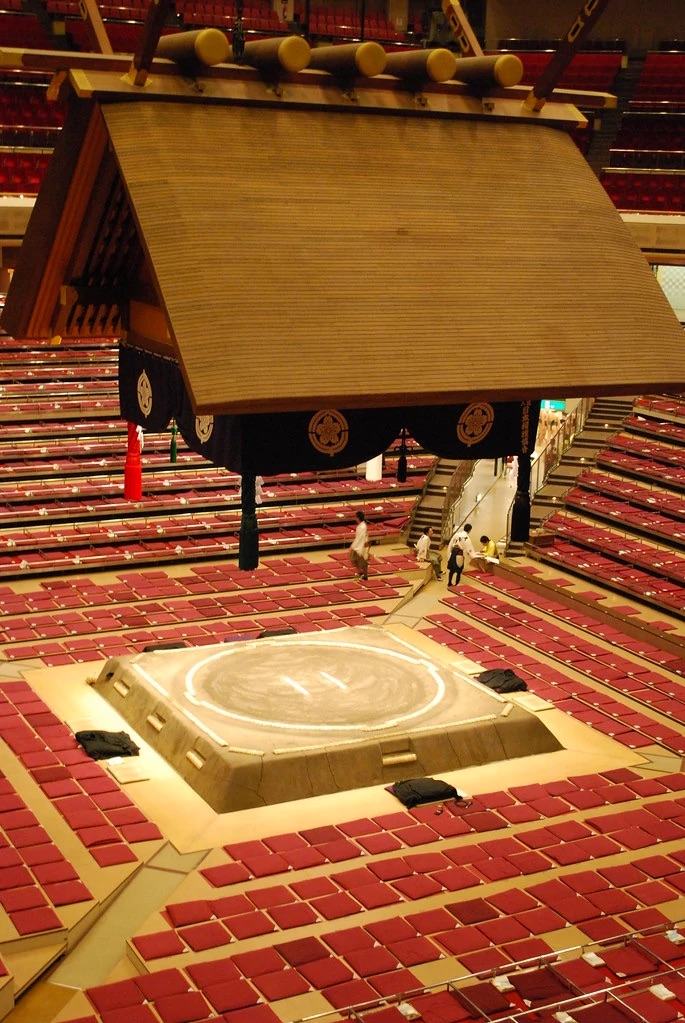Sumo tournaments take place on a raised ring called a dohyo. It is traditionally made of clay and rice straw bales. There are two white lines, Shikiri lines, at the center of the ring to designate where the combatants position themselves behind these lines at the start of the bout. Dohyo in professional sumo tournaments are consecrated ground.
A ceremony called a dohyo-matsuri is performed the day before the meet starts. Those are free and open to the public. Sumo referees acting as Shinto priests bury items including rice, squid, salt and chestnuts in a small hole in the center of the ring.
The diameter of the ring was increased to 4.85 meters in late 1945, as it was felt that would appeal more to occupation forces, but after the wrestlers protested it was changed back to the previous (and current) 4.55 meters.
The offset bales on the four sides of the ring are a throwback to when sumo was mostly performed outdoors and they allowed rainwater to drain away.
The two white lines in the center of the ring are called shikirisen. They are repainted immediately following each day’s action. The lines are quite slippery and many rikishi have lost bouts after stepping on them.

Leave a comment